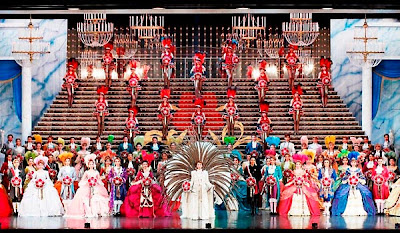A Month in Greece: Thessaloniki
 |
| The Arch of Galerius, in downtown Thessaloniki |
In the last post I talked about the first stop on my travels in Greece, the beautiful world heritage site of Meteora, which you can read here. From Meteora, we took the train up to Thessaloniki, which is in the northern Macedonian region of Greece, not to be confused with the actual country of Macedonia nearby.
We arrived there in late November, so it was the coldest place that we visited, but still not that bad when you've just come from the U.K. Thessaloniki is known for its alternative culture, with a lot of art and trendy nightlife going on. It's a port city, with a nice waterfront area to walk around, which is where you can see one of the main landmarks, the White Tower.
 |
| The White Tower of Thessaloniki |
The tower has a pretty dark history. Originally there was a tower in that location from Byzantine times, but it was replaced by the Turks with the current tower sometime after the start of Ottoman rule in that area in 1430. During the Ottoman rule, the tower was used as a prison and also a site of mass executions. Definitely not the cheeriest of tourist spots.
Because of its bloody past, it was called the "Red Tower" until the Greeks reclaimed it in 1912. It was whitewashed then as a symbolic cleansing and renamed the "White Tower".
It's hard to walk through Thessaloniki without coming across something ancient. The city is full of Byzantine churches, sprawling ruins of Roman forums and marketplaces, and old baths and temples to the Greek gods. You really cannot disconnect from the history of the place as you explore it.
 |
| Walking by ancient ruins in downtown Thessaloniki |
Another of the biggest landmarks is the Roman rotunda, built in 306 AD by the Roman Emperor Galerius. It may have been intended as his mausoleum, or possibly as a temple. In 326 the Emperor Constantine had it converted into a church, which is why it is also known as the church of Agios Georgios (or St. George). But then, in 1590, it was converted into a mosque by the Ottomans, and finally, back into a church in 1912. I think this says a lot about the history of the region.
 |
| Entrance to the Roman rotunda, built by Emperor Galerius |
 |
| Inside the rotunda |
Nearby the rotunda is the Arch of Galerius. It was built before the rotunda, in 298-99 AD, as part of an imperial precinct which connected to his palace. The arch is covered in marble carvings showing Galerius' victory over the Persians. The carvings are surprisingly intricate and much more intact than many of the things that you see in Greece, which has experienced its fair share of looting over the centuries.
 |
| Arch of Galerius |
 |
| Relief depicting the victory over the Persians on the Arch of Galerius |
In contrast to all of this ancient history is the alternative culture of Thessaloniki today, which feels much more modern than anywhere else I visited in Greece. The food there was great, and we really enjoyed the laid-back atmosphere of the bars and cafes, where you could just sit and chat over drinks all evening. This is basically the Greek national past-time.
Finally, a fun place to visit if you find yourself in Thessaloniki is the old neighborhood, where you can see parts of the old city walls and a lot of more traditional looking homes and churches. This area is perched on the hill overlooking the harbor, so you can get great views of the city from up there.
 |
| The old city wall in Thessaloniki |
 |
| View of the harbor from the old neighborhood in Thessaloniki |
I really enjoyed Thessaloniki and wish I could've had a little more time there. Whether you're interested in ancient culture or something more modern, it's definitely worth a visit when traveling in Greece.
More posts about Greece:


Comments
Post a Comment